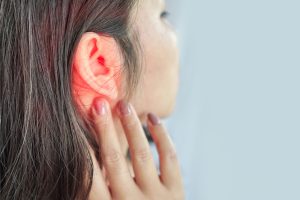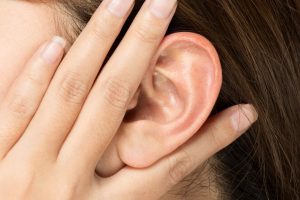
EAR INFECTION TREATMENT
Ear infection treatment. An ear infection, known medically as acute otitis media, refers to a rapid onset infection occurring in the middle ear. This area is the air-filled cavity located between the eardrum and the inner ear, containing the fragile bones responsible for transmitting sound vibrations from the eardrum to the inner ear, enabling hearing.
EAR INFECTION TREATMENT
The Eustachian tubes are channels that link the middle ear to the rear of the throat. Their function is to maintain air pressure within the ear and to inhibit the buildup of fluid in the middle ear cavity. When the Eustachian tube is not functioning properly, it becomes difficult for fluid to drain from the middle ear, leading to a sensation of muffled hearing. Additionally, ear infections caused by viruses or bacteria can result in fluid accumulation in the middle ear. In such instances, the fluid may be infected, often resulting in discomfort alongside the muffled hearing.
Symptoms

Symptoms of an ear infection frequently emerge following a cold and may include:
1. Ear pain
2. Decreased appetite
3. Difficulty sleeping
4. Hearing issues in the affected ear
5. A sensation of fullness or pressure in the ear
6. Discharge from the ear that may be yellow, brown, or white, which could indicate a perforated eardrum
If you experience drainage from your ear, avoid inserting any objects into the ear canal, as contact with a ruptured eardrum can lead to further injury.
Causes

Ear infections are primarily caused by bacteria and viruses. These infections frequently develop following a cold or another upper respiratory illness. The pathogens enter the middle ear via the eustachian tube. Once they are inside, the presence of the virus or bacteria can lead to inflammation of the eustachian tubes. This inflammation may result in a blockage, which impairs the function of the eustachian tubes and can lead to the accumulation of infected fluid in the middle ear.
Risk factors

Age: Infants and toddlers aged between 6 months and 2 years are more susceptible to ear infections.
Family history: A tendency for ear infections can be hereditary.
Colds: The presence of a cold heightens the likelihood of developing an ear infection. Children in daycare or group environments face a higher risk due to increased exposure to peers with colds or other contagious respiratory conditions.
Chronic illnesses: Persistent health issues, such as immune deficiencies and chronic respiratory conditions like cystic fibrosis and asthma, can elevate the risk of ear infections.
Ethnicity: Children who are Native American, Hispanic, or Alaska Native experience a higher incidence of ear infections compared to those from other ethnic backgrounds.
Poor air quality and smoky environments: Exposure to air pollution and secondhand smoke raises the risk of contracting an ear infection.
Treatment
1. Antibiotics
If a bacterial infection is responsible for your child’s ear infection, antibiotics may be necessary. Healthcare professionals often choose to observe the situation for up to three days to determine if a mild infection resolves without treatment. However, in cases of severe infection, it may be essential to initiate antibiotic therapy right away.
2. Pain Management Medications
Your healthcare professional may suggest non-prescription medications, such as acetaminophen or ibuprofen, to alleviate pain and lower fever. Additionally, they may prescribe ear drops specifically designed for pain relief. It is important to adhere to your provider’s guidance regarding which medications are appropriate for your child. Aspirin should never be administered to children, as it can lead to a serious and potentially fatal condition known as Reye’s syndrome.
Summary
Reach out to your child’s pediatrician if you notice symptoms of an ear infection and there is no improvement after two to three days. In many cases, ear infections resolve on their own without medical intervention. Based on your child’s age and specific symptoms, antibiotics may be necessary. Additionally, your child’s healthcare provider can suggest appropriate pain relief options to help manage discomfort as your child recovers from the illness.
Pingback: What Could Make a 3-Year-Old Child Cry All Night? - SimplExplainer